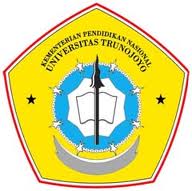Anda belum Log-in!
Silahkan Log in
Selamat Datang di Portal Digital Content Publisher
Sabtu , 13 September 2025
Perpustakaan sebagai jantung pendidikan tinggi di Indonesia, harus mampu memberi kontribusi yang berarti bagi pelaksanaan proses belajar mengajar di perguruan tinggi.
di-posting oleh 100421100012 pada 2014-08-22 09:10:21 • 807 klik
ANALISIS KESEHATAN DAN KESELAMATAN KERJA SERTA PENILAIAN TINGKAT RISIKO DENGAN METODE HAZOP (HAZARD AND OPERABILITY STUDY)
HEALTH AND SAFETY ANALYSIS AND RISK ASSESSMENT HAZOP(HAZARD STUDY AND OPERABILITY)METHOD
disusun oleh HALIMATUS SA'DIAH
| Subyek: | Keselamatan dan Kesehatan Kerja (K3) Hazard Risk Assessment traffic light system HAZOP PT.Iglas Gresik SMK3 Sistem Manajemen Keselamatan dan Kesehatan Kerja) |
| Kata Kunci: | Keselamatan dan Kesehatan Kerja (K3) Hazard Risk Assessment traffic light system HAZOP. |
[ Anotasi Abstrak ]
Keselamatan dan Kesehatan Kerja (K3) merupakan faktor yang paling penting dalam pencapaian sasaran tujuan suatu perusahaan. Di Indonesia sendiri program keselamatan dan kesehatan sudah diperhatikan dengan terbentuknya undang-undang yakni Peraturan Pemerintah nomor 50 tahun 2012. P.T. Iglas secara formal telah memiliki sistem manajemen keselamatan dan kesehatan kerja. Namun peraturan yang dibuat oleh Panitia Pembina Pelaksanaan Keselamatan dan Kesehatan Kerja (P2K3) tidak bisa diimplemetasikan dengan baik, misalnya pada sistem punishment kepada para pelanggar kebijakan K3. Berdasarkan hasil observasi lapangan dan wawancara dengan pihak perusahaan didapatkan informasi bahwa pada lantai produksi khususnya pada unit forming (percetakan), furnace (pembakaran) serta unit perawatan mesin memiliki risiko atau bahaya yang tinggi terhadap potensi terjadinya kecelakaan. Maka penelitian ini membahas tentang level implementasi K3 dengan pembuatan checklist berdasarkan Peraturan Pemerintah nomor 50 tahun 2012. Berdasarkan perhitungan implementasi menggunakan konsep traffic light system didapatkan nilai implementasi sebesar 65.5% (warna kuning) yang berarti masuk dalam katagori pengimplementasian baik dan penentuan katagori kecelakaan adalah warna kuning karna jenis kecelakaan kerja mengakibatkan kehilangan hari kerja sehingga pencapaian level atau tingkat implementasi program K3 di P.T. Iglas adalah level 3 (hati-hati) yang berarti operator harus berhati-hati akan terjadinya risiko bahaya di tempat kerja. Adapun peringkingan risiko dengan HAZOP dapat diklasifikasikan terdapat 11 sumber hazard pada unit forming dengan 36 konsekuensi yaitu 7 konsekuensi extreme risk, 17 konsekuensi high risk, 9 konsekuensi moderate Risk dan 3 konsekuensi low Risk. Sedangkan peringkingan risiko pada unit furnace terdapat 5 sumber hazard dengan 5 konsekuensi yaitu 4 konsekuensi extreme risk dan 1 konsekuensi high risk.
Deskripsi Lain
Occupational Safety and Health (K3) is the most important factor in achieving a company's objectives. The safety and health program has been considered by the Indonesian government, which is listed in Government Regulation No.50 in 2012. Formally, P.T. Iglas has a management system for occupational safety and health. However, the regulation which is made by committee builder implementation of occupational safety and health (P2K3) cannot be implemented well, for example the punishment system for K3 policy violators. Based on the result of observation in the field and the interview with a person who works in the company, researcher got information that on the production floor, the forming unit (printing), the furnace (burning) and the treatment machine unit have a high level of risk and high level of hazard for the occurrence of accidents. Therefore, this study explains about K3 implementation level by making checklist based on the Government Regulation No 50 in 2012. Based on the implementation calculation using the traffic light system, the result is, 65.5% (yellow color), which shows that implementation is in accident category. It can be concluded that the implementation level (the level of achievement) of K3 program in P.T. Iglas is in the level 3, which means that the operators should be beware of the accidental risk in the workplace. The risk scoring with HAZOP can be classified into 11 sources on forming units, which consists of 36 consequences. It is 7 extreme risk consequences, 17 high risk consequences, 9 moderate risk consequences and 3 low risk consequences. While the risk scoring on furnace units there are 5 sources hazard which consist of 5 consequences. There are 4 extreme risk consequences and 1 high risk consequence.
| Kontributor | : NACHNUL ANSORI,S.T.,M.T;IDA LUMINTU,S.T.,M.T.,PhD |
| Tanggal tercipta | : 2014-07-01 |
| Jenis(Tipe) | : Text |
| Bentuk(Format) | |
| Bahasa | : Indonesia |
| Pengenal(Identifier) | : TRUNOJOYO-Tugas Akhir-5894 |
| No Koleksi | : 100421100012 |
 Download File Penyerta (khusus anggota terdaftar)
Download File Penyerta (khusus anggota terdaftar) 1. TRUNOJOYO-Tugas Akhir-5894-Chapter 1(10.04.211.00012).pdf - 144 KB
1. TRUNOJOYO-Tugas Akhir-5894-Chapter 1(10.04.211.00012).pdf - 144 KB 2. TRUNOJOYO-Tugas Akhir-5894-Chapter 2 (10.04.211.00012).pdf - 412 KB
2. TRUNOJOYO-Tugas Akhir-5894-Chapter 2 (10.04.211.00012).pdf - 412 KB 3. TRUNOJOYO-Tugas Akhir-5894-Chapter 3(10.04.211.00012).pdf - 222 KB
3. TRUNOJOYO-Tugas Akhir-5894-Chapter 3(10.04.211.00012).pdf - 222 KB 4. TRUNOJOYO-Tugas Akhir-5894-Chapter 4 (10.04.211.00012).pdf - 1010 KB
4. TRUNOJOYO-Tugas Akhir-5894-Chapter 4 (10.04.211.00012).pdf - 1010 KB 5. TRUNOJOYO-Tugas Akhir-5894-Chapter 5 (10.04.211.00012).pdf - 94 KB
5. TRUNOJOYO-Tugas Akhir-5894-Chapter 5 (10.04.211.00012).pdf - 94 KB 6. TRUNOJOYO-Tugas Akhir-5894-Daftar Pustaka (10.04.211.00012).pdf - 97 KB
6. TRUNOJOYO-Tugas Akhir-5894-Daftar Pustaka (10.04.211.00012).pdf - 97 KB 7. TRUNOJOYO-Tugas Akhir-5894-Lampiran (10.04.211.00012).pdf - 254 KB
7. TRUNOJOYO-Tugas Akhir-5894-Lampiran (10.04.211.00012).pdf - 254 KB 8. TRUNOJOYO-Tugas Akhir-5894-Abstrak (10.04.211.00012).pdf - 115 KB
8. TRUNOJOYO-Tugas Akhir-5894-Abstrak (10.04.211.00012).pdf - 115 KB 9. TRUNOJOYO-Tugas Akhir-5894-Cover (10.04.211.00012).pdf - 590 KB
9. TRUNOJOYO-Tugas Akhir-5894-Cover (10.04.211.00012).pdf - 590 KB Dokumen sejenis...
Dokumen sejenis...Tidak ada !
 Dokumen yang bertautan...
Dokumen yang bertautan...- KAJIAN RlSlKO KOMPARATIF TERHADAP PEMBANGKITAN LlSTRlK BATUBARA DAN NUKLIR
- KAJIAN RlSlKO KOMPARATIF TERHADAP PEMBANGKITAN LlSTRlK BATUBARA DAN NUKLIR
- PENGARUH SISTEM PENGENDALIAN INTERN TERHADAP KINERJA KARYAWAN PT. PLN (PERSERO) AREA PELAYANAN JARINGAN (APJ) PAMEKASAN
- PENGARUH HUBUNGAN EKSEKUTIF DAN LEGISLATIF, LATAR BELAKANG PENDIDIKAN, INDIKATOR KINERJA, KOMITMEN, PENYUSUN APBD, DAN BUDAYA ORGANISASI TERHADAP KETERLAMBATAN DALAM PENYUSUNAN APBD DI KABUPATEN BANGKALAN
- Penilaian Kecanggihan Teknologi Menggunakan Metode Teknometrik Sebagai Strategi Pengembangan Teknologi Di PT. Barata Indonesia (Persero)
 Kembali ke Daftar
Kembali ke Daftar 